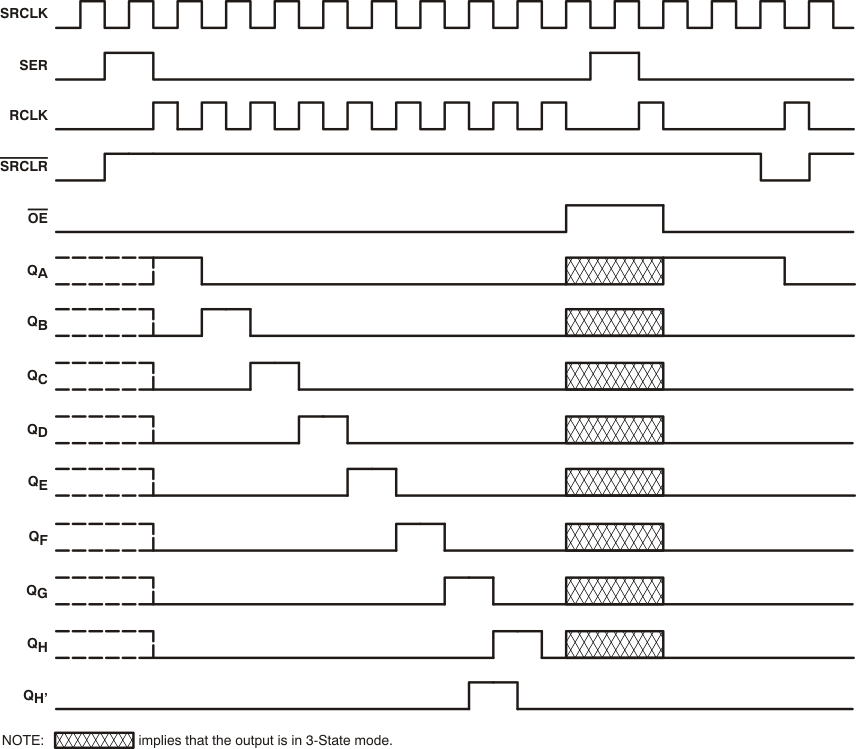SCLS041J December 1982 – October 2021 SN54HC595 , SN74HC595
PRODUCTION DATA
- 1 Features
- 2 Applications
- 3 Description
- 4 Revision History
- 5 Pin Configuration and Functions
- 6 Specifications
- 7 Parameter Measurement Information
- 8 Detailed Description
- 9 Application and Implementation
- 10Power Supply Recommendations
- 11Layout
- 12Device and Documentation Support
- 13Mechanical, Packaging, and Orderable Information
Package Options
Mechanical Data (Package|Pins)
Thermal pad, mechanical data (Package|Pins)
- DW|16
Orderable Information
6.6 Timing Requirements
over operating free-air temperature range (unless otherwise noted)
| VCC | TA = 25°C | SN54HC595 | SN74HC595 | UNIT | ||||||
|---|---|---|---|---|---|---|---|---|---|---|
| MIN | MAX | MIN | MAX | MIN | MAX | |||||
| fclock | Clock frequency | 2 V | 6 | 4.2 | 5 | MHz | ||||
| 4.5 V | 31 | 21 | 25 | |||||||
| 6 V | 36 | 25 | 29 | |||||||
| tw | Pulse duration | SRCLK or RCLK high or low | 2 V | 80 | 120 | 100 | ns | |||
| 4.5 V | 16 | 24 | 20 | |||||||
| 6 V | 14 | 20 | 17 | |||||||
| SRCLR low | 2 V | 80 | 120 | 100 | ||||||
| 4.5 V | 16 | 24 | 20 | |||||||
| 6 V | 14 | 20 | 17 | |||||||
| tsu | Set-up time | SER before SRCLK↑ | 2 V | 100 | 150 | 125 | ns | |||
| 4.5 V | 20 | 30 | 25 | |||||||
| 6 V | 17 | 25 | 21 | |||||||
| SRCLK↑ before RCLK↑(1) | 2 V | 75 | 113 | 94 | ||||||
| 4.5 V | 15 | 23 | 19 | |||||||
| 6 V | 13 | 19 | 16 | |||||||
| SRCLR low before RCLK↑ | 2 V | 50 | 75 | 65 | ||||||
| 4.5 V | 10 | 15 | 13 | |||||||
| 6 V | 9 | 13 | 11 | |||||||
| SRCLR high (inactive) before SRCLK↑ | 2 V | 50 | 75 | 60 | ||||||
| 4.5 V | 10 | 15 | 12 | |||||||
| 6 V | 9 | 13 | 11 | |||||||
| th | Hold time, SER after SRCLK↑ | 2 V | 0 | 0 | 0 | ns | ||||
| 4.5 V | 0 | 0 | 0 | |||||||
| 6 V | 0 | 0 | 0 | |||||||
(1) This set-up time allows the storage register to receive stable data from the shift register. The clocks can be tied together, in which case the shift register is one clock pulse ahead of the storage register.
 Figure 6-1 Timing Diagram
Figure 6-1 Timing Diagram